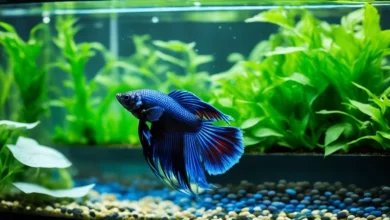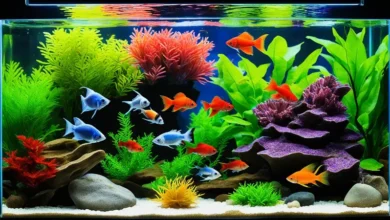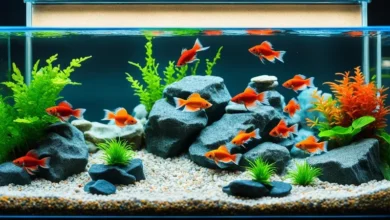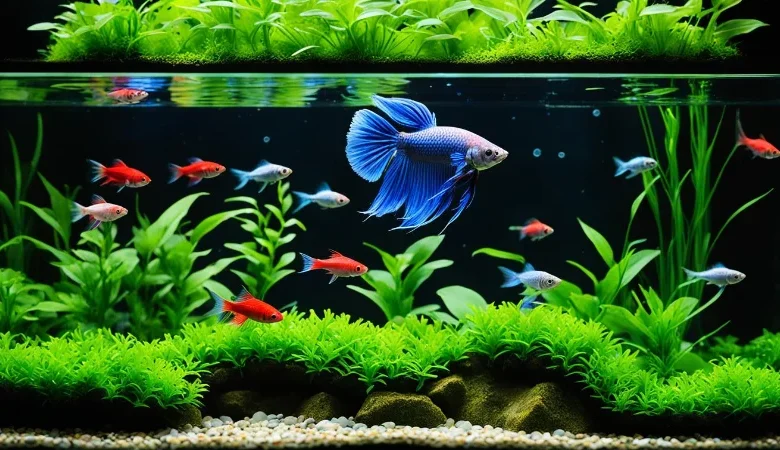
Female bettas have surged in popularity among aquarium enthusiasts, and for good reason. With their vibrant colors and engaging personalities, these fish bring life and beauty to any tank. Unlike their notoriously aggressive male counterparts, female bettas often present the exciting possibility of keeping them with tank mates, creating a dynamic and diverse aquatic community.
However, introducing tank mates to your female betta isn’t a decision to take lightly. Despite being generally less aggressive than males, female bettas still possess the temperamental nature their species is known for. Finding the perfect balance between compatibility and harmony requires careful consideration of numerous factors including tank size, water parameters, and the individual personality of your betta.
In this comprehensive guide, we’ll explore everything you need to know about female betta tank mates. Whether you’re considering adding companions to a single female betta or planning a more complex sorority setup, this article will help you make informed decisions to create a thriving, peaceful aquarium environment that both you and your fish will enjoy.
Understanding Female Betta Temperament
Before diving into specific tank mate recommendations, it’s crucial to understand the unique temperament of female bettas, which differs significantly from their male counterparts.
Female vs. Male Betta Aggression
While male bettas are infamous for their territorial nature and tendency to fight (hence their common name “Siamese fighting fish”), female bettas typically display less aggression. That said, they still retain many of the same instincts:
- Female bettas can be territorial, just generally to a lesser degree than males
- They may establish a hierarchy when kept together
- Individual personality variations exist – some females can be quite aggressive
- They’re less likely to attack fish that don’t resemble other bettas
This reduced aggression is what makes female bettas potential candidates for community tanks, though success is never guaranteed.
The “Betta Sorority” Concept
A “betta sorority” refers to a tank housing multiple female bettas together. While possible, this arrangement comes with significant risks:
- Hierarchy establishment can lead to stress, finnipping, and even serious injuries
- Some females may never adapt to group living
- Constant monitoring is essential, especially during the initial weeks
- Even established sororities can suddenly experience aggression flare-ups
Experienced aquarists often debate the ethics of sorority tanks due to the stress they potentially cause these fish. If you’re considering a sorority, be prepared for the possibility that it may not work, and have backup tanks ready.
Factors Influencing Betta Aggression
Several factors can influence how aggressive your female betta might be:
- Tank size: Smaller tanks increase territorial behavior
- Environment: Inadequate hiding places or poor water conditions increase stress, leading to aggression
- Individual personality: Like people, each betta has a unique disposition
- Introduction method: Proper acclimation and introduction techniques can reduce initial aggression
- Number of fish: In sorority setups, having 5+ females often works better than in smaller groups as it diffuses aggression
Understanding these factors will help you create an environment that minimizes aggression and increases the chances of successful cohabitation.
Essential Considerations Before Adding Tank Mates
Setting up the proper environment is crucial for the success of any community tank featuring female bettas. Let’s examine the key considerations:
Tank Size
Perhaps the most critical factor in keeping female bettas with tank mates is providing adequate space:
- 10-gallon tank: The absolute minimum for a single female betta with very few small tank mates. This size is too small for a sorority.
- 20-gallon long tank: Recommended minimum for a small sorority (5-7 females) with minimal tank mates. The horizontal swimming space is preferable to tall tanks.
- 30+ gallon tanks: Ideal for sororities with additional tank mates, providing enough territory for all inhabitants.
Remember: Larger tanks not only provide more swimming space but also maintain more stable water parameters and dilute aggression by giving fish room to establish territories.
Water Parameters
Female bettas and their potential tank mates must share compatible water parameter requirements:
- Temperature: 76-80°F (24-27°C) is ideal for bettas
- pH: 6.8-7.5 works well for bettas and most compatible tank mates
- Hardness: Bettas prefer soft to moderately hard water (5-12 dGH)
- Ammonia/Nitrite: Must be 0 ppm at all times
- Nitrate: Keep below 20 ppm through regular water changes
When selecting tank mates, their parameter requirements should align closely with these values to ensure all inhabitants thrive.
Filtration and Water Changes
Proper filtration is essential in community tanks:
- Use filters rated for your tank size or larger
- Ensure gentle flow – bettas struggle with strong currents
- Sponge filters work well as they provide biological filtration without creating strong currents
- Perform weekly water changes of 25-30%
- Test water parameters regularly with a reliable test kit
Remember that adding tank mates increases the bioload, requiring more robust filtration and potentially more frequent water changes.
Tank Setup and Decoration
Creating a well-structured environment helps reduce aggression and provides security for all tank inhabitants:
- Include plenty of live or silk plants (avoid plastic plants that can tear delicate fins)
- Create distinct territories with decorations, driftwood, and rocks
- Provide hiding places at all levels of the tank
- Consider floating plants to diffuse light and create security
- Ensure decorations don’t have sharp edges that could damage fins
- Leave open swimming areas between decorated zones
A well-decorated tank not only looks beautiful but serves the practical purpose of breaking sight lines and providing refuge for fish being chased.
Top 10 Best Tank Mates for Female Bettas (Detailed Profiles)
1. Corydoras Catfish
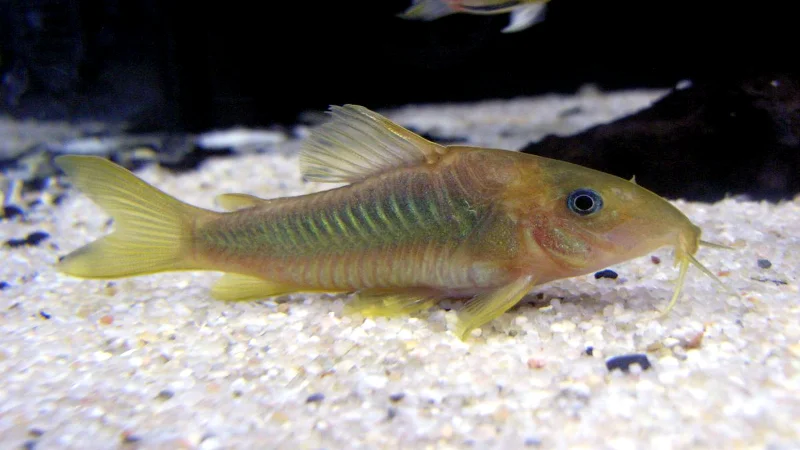
Scientific Name: Corydoras spp. (multiple species)
Common Name: Cory Catfish
Temperament: Peaceful, Social
Size: 1-3 inches (depending on species)
Water Parameters: 72-78°F, pH 6.5-7.5
Diet: Omnivore (sinking pellets, wafers, frozen foods)
Tank Level: Bottom
Why They’re a Good Choice: Corydoras are excellent bottom-dwellers that occupy a different part of the tank than bettas, minimizing territorial conflicts. They’re peaceful, social fish that help clean up food debris from the substrate. Smaller species like Pygmy Corydoras (Corydoras pygmaeus) work well in 10-gallon tanks, while larger varieties like Bronze Corydoras (Corydoras aeneus) need at least 20 gallons.
Potential Drawbacks: Corydoras are shoaling fish that need to be kept in groups of at least 6, which requires adequate tank space. They prefer slightly cooler water than bettas, so a compromise temperature of around 76-77°F works best.
Care Tips: Feed them sinking foods specifically intended for bottom-feeders. Their barbels (whiskers) can be damaged by sharp substrates, so use sand or smooth gravel. Watch for signs of stress if temperatures rise above 78°F for extended periods.
2. Harlequin Rasboras
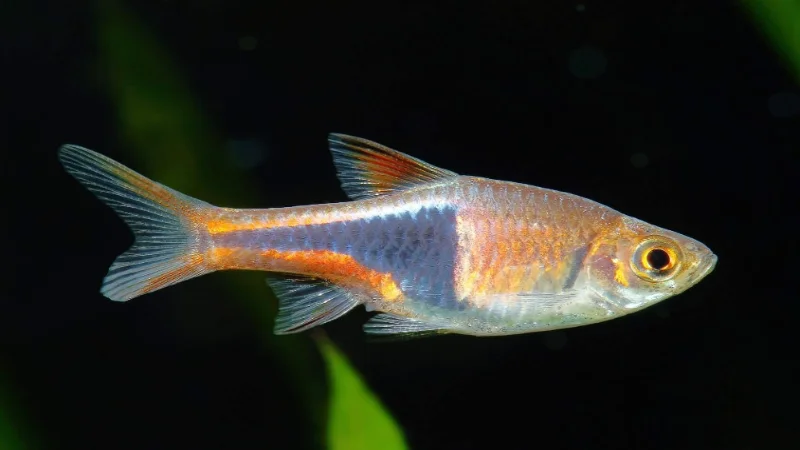
Scientific Name: Trigonostigma heteromorpha
Common Name: Harlequin Rasbora
Temperament: Peaceful, Active
Size: 1.5-2 inches
Water Parameters: 73-82°F, pH 6.0-7.5
Diet: Omnivore (flakes, small pellets, frozen foods)
Tank Level: Middle
Why They’re a Good Choice: Harlequin rasboras originate from the same regions as bettas in Southeast Asia and share similar water parameter requirements. They’re active but peaceful mid-water swimmers that won’t nip at betta fins. Their triangular body shape and reddish coloration don’t typically trigger the territorial response in bettas.
Potential Drawbacks: Being schooling fish, they need groups of at least 6-8 individuals, requiring a minimum 20-gallon tank when kept with a female betta.
Care Tips: Provide plenty of plants and open swimming space for these active schoolers. Their natural coloration becomes more vibrant in well-planted tanks with slightly tannin-stained water (achieved by adding Indian almond leaves or driftwood).
3. Ember Tetras
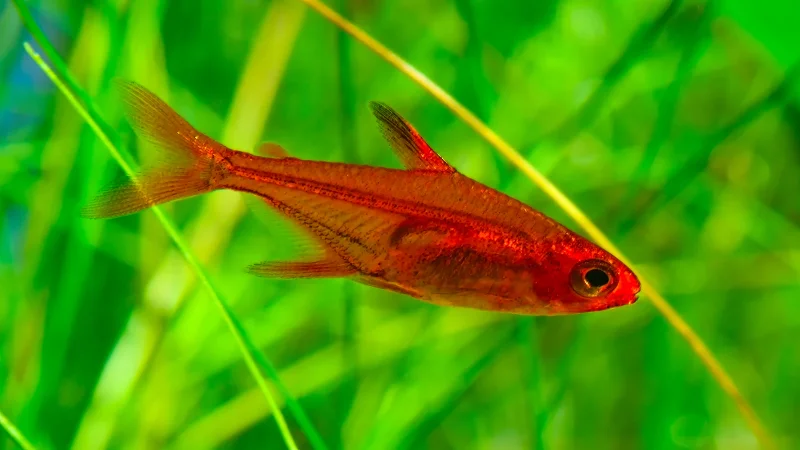
Scientific Name: Hyphessobrycon Amanda
Common Name: Ember Tetra
Temperament: Peaceful, Shy
Size: 0.8-1 inch
Water Parameters: 73-84°F, pH 5.5-7.0
Diet: Omnivore (quality flakes, small pellets, frozen foods)
Tank Level: Middle
Why They’re a Good Choice: These tiny, orange-red tetras are among the most peaceful schooling fish available. Their diminutive size means they’re rarely perceived as a threat by female bettas. Their bright coloration adds visual interest to the middle water column without triggering aggression.
Potential Drawbacks: Being so small, they might be intimidated by an aggressive female betta. They prefer slightly acidic water, which may require adjustment if your water is naturally hard and alkaline.
Care Tips: Keep in groups of 8-10 for best behavior and to reduce stress. They appreciate densely planted areas with some floating plants to diffuse light. Feed high-quality micro foods to ensure they get adequate nutrition.
4. White Cloud Mountain Minnows

Scientific Name: Tanichthys albonubes
Common Name: White Cloud Mountain Minnow
Temperament: Peaceful, Active
Size: 1-1.5 inches
Water Parameters: 64-75°F, pH 6.0-8.0
Diet: Omnivore (flakes, small pellets, frozen foods)
Tank Level: Middle to Top
Why They’re a Good Choice: White Clouds are incredibly hardy, peaceful schooling fish that adapt to a wide range of water conditions. They’re active but not aggressive, adding movement to the upper and middle portions of the tank without bothering bettas.
Potential Drawbacks: Their preferred temperature range is cooler than what bettas typically enjoy. While they can tolerate warmer water up to 75-76°F, this is at the lower end of a betta’s comfort zone.
Care Tips: This temperature compromise means keeping the tank around 75-76°F – acceptable for both species but not ideal for either. Provide good surface agitation for oxygen exchange, as warmer water holds less oxygen. Keep in groups of at least 8-10 for proper schooling behavior.
5. Mystery Snails
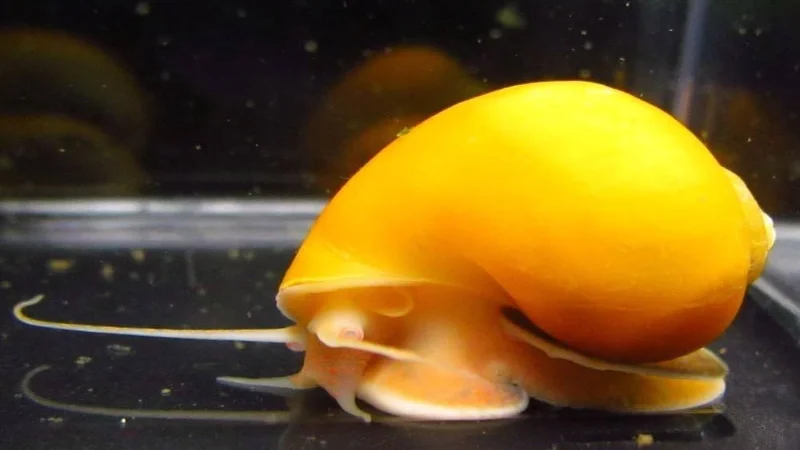
Scientific Name: Pomacea bridgesii
Common Name: Mystery Snail
Temperament: Peaceful
Size: 1-2 inches (shell diameter)
Water Parameters: 68-82°F, pH 7.0-8.0
Diet: Omnivore (algae, vegetables, commercial snail foods)
Tank Level: All levels, primarily bottom
Why They’re a Good Choice: Mystery snails are one of the best tank mates for female bettas in a 10-gallon tank. They’re excellent algae eaters that come in various colors (gold, blue, ivory, etc.) and add interest to the tank. Their large size means bettas can’t harm them, and they help keep the tank clean by consuming algae and leftover food.
Potential Drawbacks: They produce a fair amount of waste, so additional water changes may be necessary. They might occasionally climb out of the tank if water quality deteriorates, so a secure lid is essential.
Care Tips: Supplement their diet with blanched vegetables (zucchini, spinach) and algae wafers. They need calcium for healthy shell growth, which can be provided through cuttlebone pieces or commercial snail foods. Remove any that die promptly to avoid ammonia spikes.
6. Nerite Snails

Scientific Name: Neritina spp.
Common Name: Nerite Snail
Temperament: Peaceful
Size: 0.5-1 inch (shell diameter)
Water Parameters: 72-78°F, pH 6.5-8.5
Diet: Herbivore (algae, algae wafers)
Tank Level: All surfaces
Why They’re a Good Choice: Nerite snails are among the best female betta tank mates that eat algae. They’re particularly efficient at consuming film and soft algae from glass, decorations, and plants. Available in various patterns (tiger, zebra, etc.), they add visual interest. Unlike many snails, they cannot reproduce in freshwater, preventing population explosions.
Potential Drawbacks: They may lay small white eggs on hard surfaces that won’t hatch but can be unsightly. Some bettas might occasionally nip at their antennae, though serious harm is rare.
Care Tips: One nerite per 5 gallons is a good stocking guideline. In well-established tanks, they might need supplemental feeding with algae wafers if natural algae is insufficient. They appreciate harder water with some mineral content for shell health.
7. Amano Shrimp
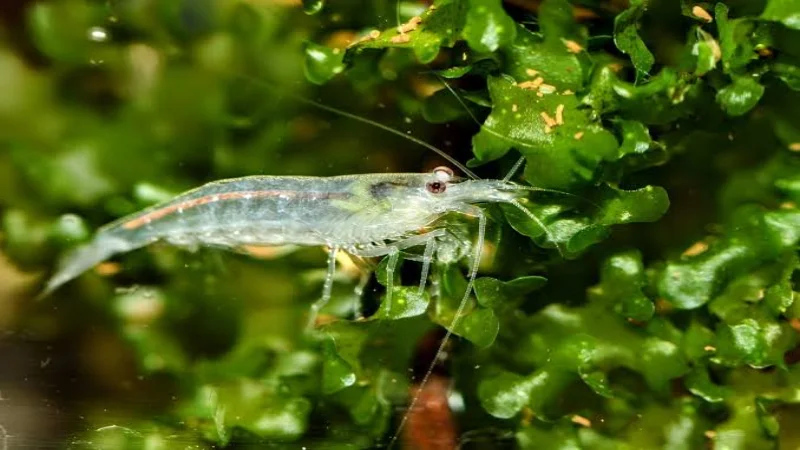
Scientific Name: Caridina multidentata
Common Name: Amano Shrimp
Temperament: Peaceful, Active
Size: 1-2 inches
Water Parameters: 70-80°F, pH 6.5-7.5
Diet: Omnivore (algae, biofilm, plant matter, occasional protein)
Tank Level: All levels, primarily bottom
Why They’re a Good Choice: Amano shrimp are the largest commonly available freshwater shrimp and are excellent algae eaters. Their size makes them less likely to be seen as prey by female bettas compared to smaller shrimp species. They’re incredibly efficient at cleaning algae, uneaten food, and debris from the tank.
Potential Drawbacks: Some particularly aggressive female bettas might still harass or prey on them. They’re sensitive to poor water quality and copper medications.
Care Tips: Provide plenty of hiding places with plants, driftwood, and caves. Keep at least 3-5 together as they’re social creatures. Unlike cherry shrimp, they won’t reproduce in freshwater tanks, preventing overpopulation. Acclimate them very slowly to new tanks to prevent shock.
8. African Dwarf Frogs
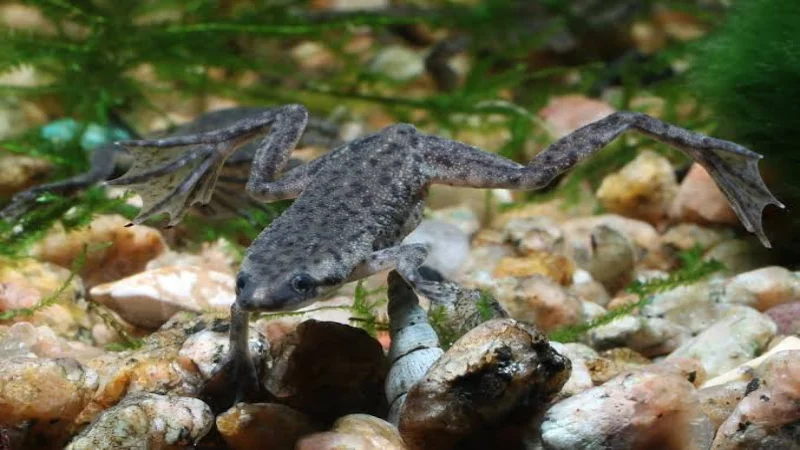
Scientific Name: Hymenochirus boettgeri
Common Name: African Dwarf Frog
Temperament: Peaceful, Quirky
Size: 1-1.5 inches
Water Parameters: 75-82°F, pH 6.5-7.5
Diet: Carnivore (bloodworms, brine shrimp, frog pellets)
Tank Level: Bottom, occasional surface visits
Why They’re a Good Choice: These fully aquatic frogs add a unique element to betta tanks. They’re peaceful, relatively inactive, and occupy the bottom of the tank where bettas rarely venture. Their amusing antics, like floating motionless at the surface or dancing during feeding, make them entertaining tank mates.
Potential Drawbacks: Feeding can be challenging as they’re slow eaters and bettas may steal their food. They can be susceptible to fungal and bacterial infections if water quality isn’t maintained.
Care Tips: Keep in groups of at least 3 for their social well-being. Target-feed them with tweezers to ensure they receive adequate nutrition. Provide smooth substrate to protect their sensitive skin, and include easy access to the surface as they need to breathe air.
9. Otocinclus Catfish
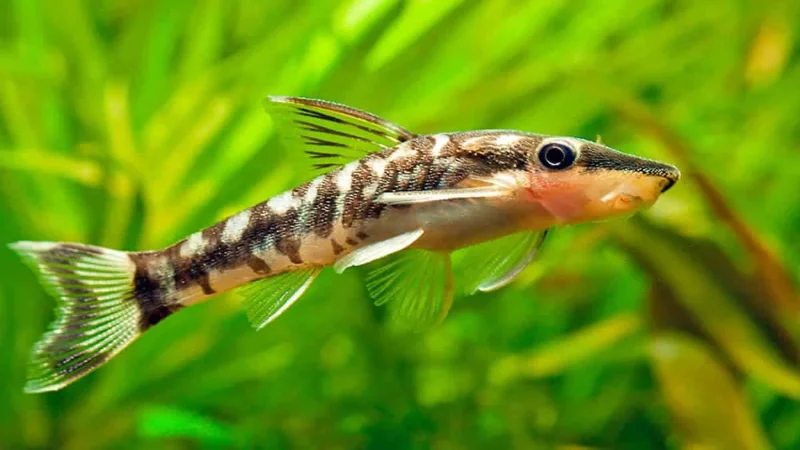
Scientific Name: Otocinclus spp.
Common Name: Oto Catfish
Temperament: Peaceful, Shy
Size: 1-2 inches
Water Parameters: 72-82°F, pH 6.0-7.5
Diet: Herbivore (algae, blanched vegetables, algae wafers)
Tank Level: All surfaces
Why They’re a Good Choice: Otos are among the best female betta tank mates that eat algae, specialized for consuming soft brown and green algae from surfaces including plant leaves. They’re small, peaceful, and completely non-aggressive. Their subtle coloration and constant algae-grazing make them fascinating yet unobtrusive additions to the community.
Potential Drawbacks: They’re sensitive to poor water quality and new tank conditions. They require stable, mature aquariums with established biofilm and algae growth. They need to be kept in groups of at least 6, requiring a 20+ gallon tank.
Care Tips: Only add them to tanks that have been running for at least 3 months. Supplement their diet with algae wafers and blanched vegetables (zucchini, spinach) as tanks with good water quality often don’t produce enough natural algae. Avoid copper medications which are toxic to them.
10. Platies
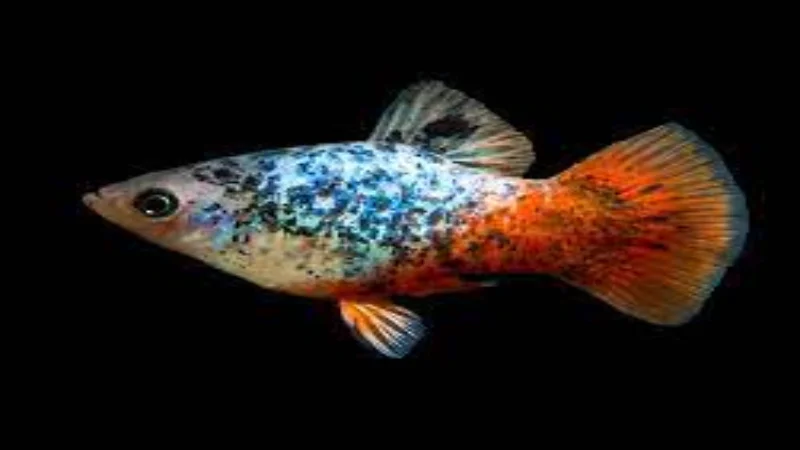
Scientific Name: Xiphophorus maculatus
Common Name: Platy
Temperament: Peaceful, Active
Size: 2-3 inches
Water Parameters: 72-82°F, pH 7.0-8.0
Diet: Omnivore (flakes, pellets, frozen foods, vegetable matter)
Tank Level: Middle to Top
Why They’re a Good Choice: Platies are colorful, active fish available in numerous color varieties. They’re peaceful, hardy, and adapt well to a range of water conditions. Unlike guppies, their tails are shorter and less likely to trigger fin-nipping behavior in bettas.
Potential Drawbacks: Their size and activity level mean they require at least a 20-gallon tank when kept with female bettas. They’re prolific breeders, which can lead to overpopulation if males and females are kept together.
Care Tips: Consider keeping only females to prevent breeding (a group of 3-5 works well). They appreciate some plant coverage but also need open swimming space. Include some vegetable matter in their diet for optimal health. Their slightly higher pH preference means finding a middle ground with bettas (around pH 7.0-7.5 typically works well).
Tank Mates to Avoid (and Why)
Not all fish make suitable companions for female bettas. Here are some species to avoid and the reasoning behind these recommendations:
1. Guppies and Fancy Guppies
Despite their peaceful nature, guppies present multiple problems:
- Their flowing, colorful tails can trigger aggression in female bettas
- Male guppies may harass female bettas, mistaking them for female guppies
- Their active, rapid swimming style can stress bettas
2. Male Bettas
This should be obvious, but it bears repeating: never keep male and female bettas together except for brief, supervised breeding purposes. The result will almost always be aggression, stress, and potential injury.
3. Fin-Nipping Species
Avoid known fin-nippers like:
- Tiger barbs
- Serpae tetras
- Some danio species
- Black widow tetras
These active, sometimes aggressive schooling fish will target betta’s flowing fins, causing stress and potential infections.
4. Large or Aggressive Cichlids
Cichlids (including angelfish) are generally too territorial and aggressive for bettas:
- They compete for the same territory
- Many grow too large
- Their aggressive feeding habits outcompete bettas
5. Fast, Active Schooling Fish
Extremely active species can stress the more sedate bettas:
- Zebra danios
- Giant danios
- Larger tetras
- Silver dollars
Their constant, rapid movement around the tank creates a stressful environment for bettas.
6. Fish Requiring Different Water Parameters
Some fish simply have incompatible care requirements:
- Goldfish (cold water, high waste production)
- Discus (higher temperature needs)
- African cichlids (hard, alkaline water)
When water parameters must be compromised for multiple species, no fish thrives and health problems often result.
Setting Up a Betta Sorority (Advanced)
⚠️ Warning: Betta sororities are considered an advanced aquarium challenge and come with significant risks of aggression, stress, and injury. They require constant monitoring and should only be attempted by experienced aquarists with backup plans in place.
If you’re determined to try a sorority setup, here are guidelines to maximize your chances of success:
Tank Requirements
- Minimum size: 20 gallons long (30+ gallons preferred)
- Filtration: Gentle but efficient (sponge filters or baffled HOB filters)
- Heating: Reliable heater maintaining 78-80°F
- Decorations: Densely planted with numerous line-of-sight breaks
- Hiding places: At least 2-3 per fish at various levels of the tank
Selecting Females
- Choose 5-7 females (odd numbers can help prevent pair bullying)
- Select females of similar size and age
- Consider getting sisters from the same spawn (may reduce aggression)
- Avoid females that show extreme aggression during temporary observation
- Quarantine all new fish before introduction
Introduction Method
- Rearrange the entire tank before adding any fish (disrupts pre-established territories)
- Add all females simultaneously if possible
- Dim lights during and after the introduction
- Feed sparingly but frequently during the first few days to distract from aggression
- Monitor constantly for the first 48-72 hours
Ongoing Management
- Watch for signs of excessive chasing, nipping, or hiding
- Have isolation tanks ready at all times
- Perform regular water changes to maintain optimal conditions
- Rearrange decorations periodically to reset territories
- Remove any female showing excessive aggression or being severely bullied
- Consider peaceful tank mates only after the sorority has fully stabilized (may take weeks)
Signs of a Failing Sorority
A sorority should be disbanded if you observe:
- Females hiding constantly or unable to access food
- Open wounds or severe fin damage
- One female dominating and terrorizing all others
- Multiple aggressive encounters per hour
- Fish gasping at the surface (stress-induced)
Remember: The welfare of your fish should always take priority over the desire to maintain a sorority setup. Be prepared to separate fish if the situation deteriorates.
Introducing New Tank Mates
Proper introduction techniques can significantly increase the chances of peaceful coexistence between female bettas and their tank mates:
Step 1: Quarantine
Always quarantine new fish before adding them to your main tank:
- Use a separate tank with a filter and heater
- Monitor for at least 2-3 weeks
- Watch for signs of disease or parasites
- Treat any issues before introducing them to the main tank
Step 2: Temporary Tank Adjustment
Before adding new tank mates:
- Rearrange some decorations to disrupt established territories
- Consider dimming lights or turning them off completely
- Feed your betta before introducing new fish (reduces hunting instinct)
Step 3: Acclimation
Proper acclimation is crucial for all new fish:
- Float the bag containing new fish in the tank for 15-20 minutes to equalize the temperature
- Add small amounts of tank water to the bag every 5-10 minutes (drip method preferred)
- After 30-45 minutes of acclimation, transfer the fish to the tank using a net (don’t pour bag water in)
- Keep lights dimmed for several hours after introduction
Step 4: Observation
Closely monitor all tank inhabitants for the first few days:
- Watch for signs of aggression or stress
- Ensure all fish are eating
- Look for hiding behavior or territorial displays
- Be prepared to remove either the betta or new tank mates if serious aggression occurs
Step 5: Long-term Integration
After the first few critical days:
- Maintain a regular feeding schedule
- Perform normal water changes
- Continue monitoring for more subtle signs of incompatibility
- Adjust tank decorations if certain areas become contested territory
Troubleshooting Aggression
Even with careful planning, aggression can still occur in community tanks with female bettas. Here’s how to identify and address common issues:
Signs of Aggression in Female Bettas
- Flaring gills and fins at tank mates
- Persistent chasing of specific fish
- Nipping at fins or bodies of other fish
- Guarding certain areas of the tank aggressively
- Increased coloration during confrontations
- Ramming or charging at other fish
Signs of Stress in Tank Mates
- Hiding constantly
- Clamped fins
- Rapid breathing
- Loss of color
- Refusing food
- Erratic swimming
- Staying at the water’s surface
- Damaged fins or scales
Solutions for Reducing Aggression
- Rearrange the Tank
- Change the position of decorations, plants, and hiding spots
- This disrupts established territories and can reset aggressive behavior
- Most effective when done with a substantial water change
- Add More Visual Barriers
- Increase plant density, especially with floating and tall plants
- Add decorations that break the line of sight
- Create distinct zones within the tank
- Review Tank Size and Stocking
- Consider upgrading to a larger tank
- Reduce the number of fish if the tank appears crowded
- Ensure compatible species ratios (enough of each schooling species)
- Adjust Feeding Routine
- Feed in multiple locations simultaneously
- Use feeding rings to contain food in specific areas
- Ensure all fish receive adequate nutrition
- Time-Out Method
- Temporarily remove the aggressive betta using a breeding box or similar in-tank isolation
- After 1-2 days, reintroduce to the community
- This can sometimes “reset” territorial behavior
- Last Resort: Permanent Separation
- If aggression continues despite interventions, prioritize the welfare of all fish
- Consider rehoming either the betta or the incompatible tank mates
- Maintain a separate tank for the betta if necessary
Remember that each fish has an individual personality, and what works in one tank may not work in another. Flexibility and close observation are key to successful community tank management.
Frequently Asked Questions (FAQs)
Q: Can I keep female bettas with male bettas?
A: No, this is not recommended. Even in large tanks, males will typically harass females or fight with them outside of breeding situations, causing stress and potential injury.
Q: How many female bettas can I keep in a 10-gallon tank?
A: A 10-gallon tank is too small for multiple female bettas. While you can keep a single female with some small, peaceful tank mates, a sorority requires a minimum of 20 gallons, preferably larger.
Q: What are the best tank mates for female bettas in a 10-gallon tank?
A: In a 10-gallon tank with a single female betta, good options include: 1-2 mystery snails, 3-4 nerite snails, a small group (6+) of pygmy corydoras, or 2-3 African dwarf frogs.
Q: Can cherry shrimp live with female bettas?
A: It depends entirely on your betta’s personality. Some female bettas ignore cherry shrimp, while others hunt them as food. If you try this combination, provide dense plant coverage and hiding places for the shrimp, and be prepared for potential losses.
Q: Are peaceful tank mates for female betta sororities different than for single females?
A: Yes. Sorority tanks already have higher stress levels and bioload, so tank mates should be carefully selected. Bottom-dwellers like corydoras or peaceful schooling fish that stay in the middle water column tend to work best. Avoid adding tank mates until the sorority has been stable for several weeks.
Q: What female betta tank mates eat algae?
A: Several excellent algae-eaters compatible with female bettas include: nerite snails, mystery snails, otocinclus catfish, and amano shrimp. Each specializes in different types of algae, so research which best addresses your specific algae issues.
Q: How can I tell if my female betta is stressed by her tank mates?
A: Signs of stress include: color fading, vertical stress stripes (horizontal stripes are often normal), clamped fins, hiding behavior, loss of appetite, rapid breathing, or erratic swimming. Address these signs immediately by identifying and removing the cause of stress.
Q: Can I keep a female betta with guppies?
A: This combination is generally not recommended. The colorful, flowing fins of male guppies often trigger betta aggression, while female guppies’ constant breeding creates stress and bioload issues. If you’re determined to try, a large tank (30+ gallons) with lots of plants might work with close monitoring.
Q: How do I introduce female bettas to an established community tank?
A: Add the betta last after all other community fish are established. Use the quarantine and acclimation methods described earlier, and be ready to remove her if aggression becomes problematic. Introducing the betta to an established community often results in less territoriality than adding new fish to her territory.
Conclusion
Creating a harmonious community tank with female bettas requires careful planning, appropriate tank selection, and thoughtful species choices. While female bettas generally show less aggression than their male counterparts, their personalities play a significant role in determining compatible tank mates.
The most successful female betta communities typically feature:
- Adequate space (20+ gallons for sororities or multiple tank mates)
- Densely planted environments with plenty of hiding places
- Peaceful species that occupy different tank levels
- Proper introduction techniques and ongoing monitoring
- Contingency plans for addressing aggression
Remember that the welfare of all your aquatic pets should always be the priority. While the idea of a diverse community tank is appealing, some female bettas simply prefer solitary living or very limited tank mates. Observing your specific fish’s behavior and responding accordingly will lead to the best outcomes.
We hope this guide has provided you with the knowledge to make informed decisions about female betta tank mates. Whether you choose a simple setup with a single female and a few snails or an ambitious sorority with carefully selected companions, the key is research, patience, and attentive care.
What has your experience been with female betta tank mates? Have you discovered combinations that work particularly well? Share your experiences in the comments below!

